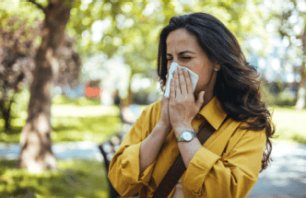A healthcare facility generates many types of waste, some of which are biohazardous or hazardous and need to be separated from other waste streams. As a waste generator, a healthcare organization is responsible for adequately sorting the waste it produces and preparing it for disposal. Everyone working in your organization must recognize the different waste types and throw them away in the appropriate containers. There can be safety, compliance, and financial consequences if you fall short in these areas.
Correctly segregating waste can be challenging due to varying rules and regulations and the rapid pace of healthcare delivery. Medical waste is regulated at the federal, state, and local levels, which can contribute to confusion among healthcare providers. In addition, some healthcare facilities may have disposal policies that are even more stringent than regulations. Sometimes, a healthcare worker must quickly decide where to put waste, and if they don’t fully understand the regulations, and their facility’s policies, they can make a mistake. The following are answers to some frequently asked questions that can help clarify how to segregate different waste streams appropriately.
What Is Considered Regulated Medical Waste (RMW)?
The definition of RMW varies by state, but it generally includes any material that is saturated with blood or other potentially infectious materials. Examples include bandages and dressings, IV swabs, and used sharp instruments such as needles or scalpels. Depending on your state, RMW may be called biohazardous waste, biomedical waste, infectious waste, or something similar.
What Isn’t Considered RMW?
Although it’s important to know what RMW is, it’s also critical to understand what it isn’t. Just because an item is soiled does not necessarily mean that it should be considered RMW. For example, materials contaminated with certain bodily fluids, such as urine, feces, nasal secretions, sweat, spit, or vomit, are typically not RMW and would not need to be disposed of in RMW containers. Other types of waste that are usually not considered RMW include non-contaminated personal protective equipment (PPE) like a surgical mask. Used feminine hygiene products, diapers, and urine catheters/bags are not generally considered regulated medical waste.
Where Should Healthcare Workers Dispose of RMW?
Most RMW should go in a red RMW bag. Anything that could puncture the skin when handled should go in a puncture-resistant sharps container. Red bags are single-use while sharps containers can be single-use or reusable.
Why Can’t You Put All Medical-Related Waste in RMW Containers?
Although throwing everything in red bags or sharps containers may be tempting because these receptacles are usually the most accessible waste containers in a healthcare organization, this would be an expensive strategy. The cost of treating and disposing of RMW is much higher than the cost of treating and disposing of non-RMW trash. And according to the World Health Organization, 85% of the waste generated by a healthcare organization is general, non-hazardous waste comparable to domestic waste. So, if a healthcare entity opts to put all its waste in red bags, it will pay premium prices unnecessarily, wasting organizational resources for no added benefit. With this approach, there is also a risk that something inappropriate could end up in the red bag or sharps container, such as hazardous waste or pharmaceutical waste.
What Is Pharmaceutical Waste?
Pharmaceutical waste refers to medications that are no longer needed or can no longer be used, such as expired, contaminated, or partially administered items. This waste can be classified as either hazardous or non-hazardous.
How Should You Dispose of Hazardous Pharmaceutical Waste?
Hazardous pharmaceutical waste should be segregated and disposed of pursuant to the U.S. EPA’s Management Standards for Hazardous Waste Pharmaceuticals or equivalent state law. Hazardous pharmaceutical waste should never be placed in a red bag or a sharps container.
What Is Trace Chemotherapeutic Waste?
Chemotherapeutic waste is generated during cancer treatment. Trace chemotherapeutic waste generally refers to empty drug vials, syringes, and needles; used spill kits; empty IV tubing and bags; and contaminated gloves and gowns. Depending on applicable law, trace chemotherapy waste may be regulated as RMW and certain collection, treatment, and disposal requirements may apply.
Should Healthcare Workers Segregate Trace Chemotherapeutic Waste?
Yes. Depending on your state’s laws, trace chemo waste should generally be segregated into containers specifically designed for such waste and that are destined for incineration treatment.
How Should You Package Full Waste Containers for Disposal?
Before a medical waste company like Stericycle can retrieve waste containers for disposal, healthcare organizations must package the bags or containers appropriately, including per applicable U.S. Department of Transportation requirements. Once a red bag is full, it should be sealed to secure the contents. After securing the bag, it can be placed in the transport container. Red bags should not be visible once the outer transport container is closed.
Waste segregation can be complicated, and it helps to work with a knowledgeable waste management expert to help you make sure that your organization is consistently following the correct processes. Learn more about how Stericycle can help with your waste segregation and management efforts.



